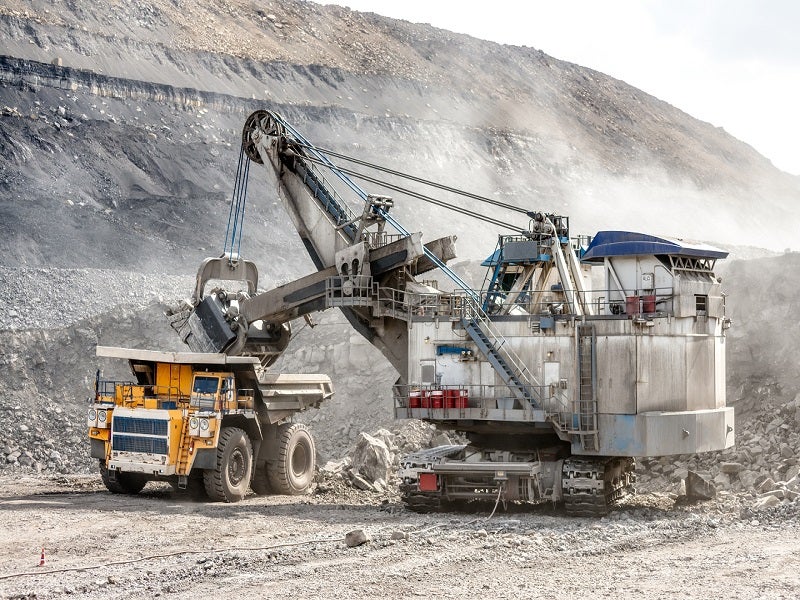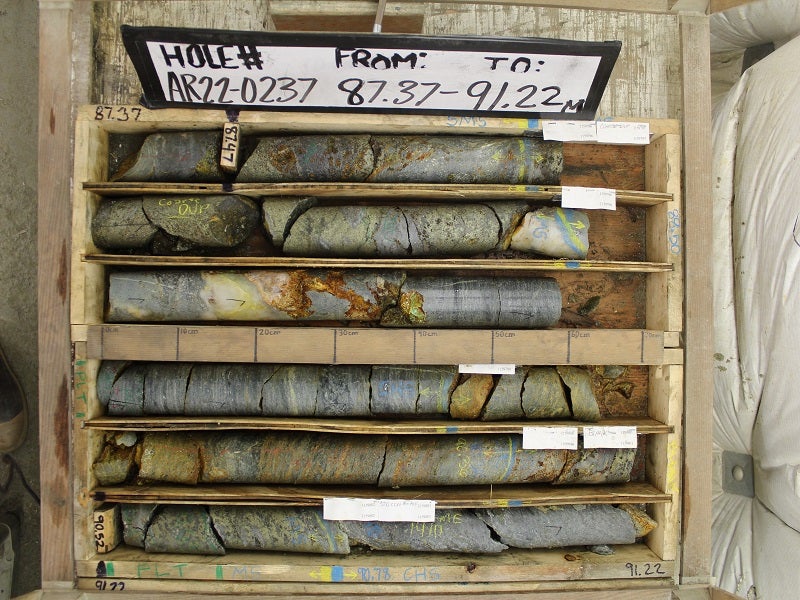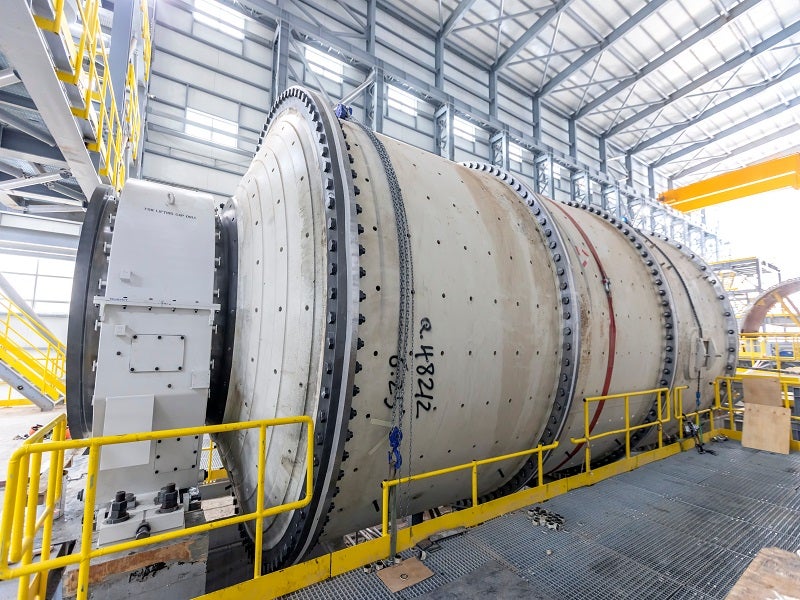The Arctic copper-zinc-lead-silver-gold project (Arctic project) is proposed to be developed as an open-pit mine in the Ambler Mining District of north-western Alaska, US.
Ambler Metals, a 50:50 joint venture company between Trilogy Metals and a wholly-owned subsidiary of South32, is the owner and developer of the project.
A pre-feasibility study for the project was completed in February 2018, followed by the feasibility study in August 2020. An updated feasibility study for the project was completed in February 2023.
The updated feasibility study highlighted a mine life of 13 years and an initial capital expenditure of approximately $1.17bn. The project is estimated to produce 149 million pounds (Mlb) of copper, 173Mlb of zinc, 26Mlb of lead, 32,538 ounces (oz) of gold and 2.8 million ounces (Moz) of silver a year.
Project location
The Arctic project is located in the Ambler mining district in the Northwest Arctic Borough of Alaska. The property is located 37km northeast of the village of Kobuk and 270km east of the town of Kotzebue.
Geology and mineralisation
The Arctic deposit is hosted in the Middle Devonian to Early Mississippian Ambler Sequence, in the upper part of the regional Anirak Schist. The sequence comprises metamorphosed, bimodal volcanic rocks with interbedded graphitic, tuffaceous and calcareous volcaniclastic metasediments.
The deposit hosts mineralisation of volcanogenic massive sulphide (VMS) type along the entire 110km strike length of the Ambler Sequence.
Mineralisation at the Arctic project is found in the form of stratiform semi-massive sulphide to massive sulphide beds embedded within fine-grained quartz schists and graphitic chlorite schists.
The mineralisation is associated with coarse-grained sulphides composed mainly of sphalerite, galena, chalcopyrite, pyrite, tetrahedrite-tennantite, arsenopyrite, and pyrrhotite with trace amounts of electrum.
Reserves
The probable mineral reserves at the Arctic project were estimated at 46.7 million tonnes (Mt) grading 2.11% copper, 0.56% lead, 2.90% zinc, 0.42g/t gold and 31.8g/t silver as of November 2022.
Mining at the Arctic project
The Arctic Project is proposed to be developed as a conventional open-pit mine with truck-shovel operation using 144t trucks and 15m³ shovels with a strip ratio of 7.3:1.
The deposit will be mined in four nested phases, including the ultimate pit limit with a maximum annual mining capacity of 35Mt and ten benches a year in each phase. Mining benches will be a combination of 5m and 10m benches. The targeted mining width will be between 70m and 100m, while the minimum mining width and berm interval will be 30m and 20m, respectively.
The mining fleet will comprise hydraulic shovels and front-end loaders (FELs). The loading and hauling fleet will be diesel-powered. The pit design will feature a 30m wide ramp with road grades of 10%.
Processing details
The process plant will have an annual processing capacity of 3.65Mt. It will produce copper, zinc and lead concentrates, while gold and silver will be recovered from both the copper and lead concentrates.
The run-of-mine (ROM) ore will be crushed in a primary jaw crusher and discharged to the conveyor, where a tramp metal magnet will remove tramp metal from the crushed ore.
The grinding circuit will comprise a semi-autogenous grinding (SAG) mill and a ball mill arranged in a closed circuit with a hydrocyclone cluster. The SAB (SAG and ball mill) circuit will reduce the particle size from 80mm to 70µm.
The discharge from the ball mill will be fed to a hydrocyclone feed pumpbox, where it will be combined with the SAG mill trommel undersize and fed to the hydrocyclone cluster. The hydrocyclone underflow will reach the ball mill, while the overflow will feed the flotation circuit by gravity.
The flotation circuit will first produce a talc concentrate to minimise the dilution of the base metal concentrates. The flotation circuit will produce a separate standard bulk copper and lead concentrate followed by the flotation of a zinc concentrate. The lead from the bulk concentrate will be floated to produce individual copper and lead concentrates.
The copper, lead and zinc concentrates from the flotation circuit will be sent to separate thickeners and mixed with a flocculant to assist in the settling of the solids. The final concentrate products will be pressure filtered to dewater the product to a preferred moisture content of 6%.
Project infrastructure
The Arctic project site is currently inaccessible by road. Access to the property will be provided through a combination of the existing highways, a proposed private road owned by the Alaska Industrial Development and Export Authority (AIDEA) and proposed access roads owned by Ambler Metals.
Power required for the project will be generated onsite using five diesel generators to produce a supply voltage of 13.8kV. The total connected load will be 25.9MW with a normal running load of 21MW.
Contact and non-contact water will be separated using a surface water management system.
To be built in stages, a single water treatment plant will treat effluent from the waste rock collection pond during the operations phase and effluent from the pit during the closure phase.
The tailings management facility (TMF) will be built with a footprint of 59ha near the headwaters of Subarctic Creek, in the upper-most portion of the creek valley.
The TMF will have the capacity to store about 41.2Mt of tailings produced over the mine life, as well as 1.5 times the probable maximum flood.
Contractors involved
The updated feasibility study was prepared by Ausenco Engineering Canada (Ausenco), an engineering and consulting company, with contributions from Wood Canada (Wood), SRK Consulting (Canada) and Brown and Caldwell.
Ausenco’s contribution to the report included plant and infrastructure design, recovery methods, metallurgy, as well as consolidation of capital and operating costs and the overall financial model.
Wood was responsible for the mine design, geology, mineral resource and reserve estimates.
SRK prepared the tailings and waste design, pit slope design, hydrogeology, and water management.
Brown and Caldwell, an environmental engineering and construction firm, performed the water treatment studies.
GeoTech, a full-service airborne geophysical solutions provider based in Canada, was engaged in 2019 to complete Versatile Time Domain Electromagnetic (VTEM) Plus and Z-Axis Tipper Electromagnetic (ZTEM) airborne helicopter geophysical surveys over the Cosmos Hills and the Ambler VMS belt.
Various metallurgical test work programmes were conducted at ALS Metallurgy, SGS Canada, and MetsoOutotec Group (Metso Group) between 2021 and 2022.






